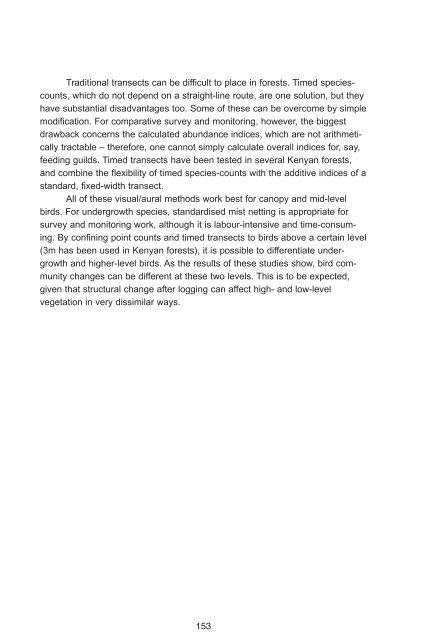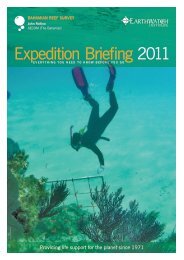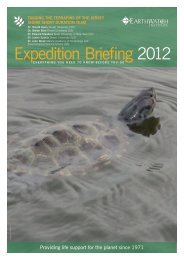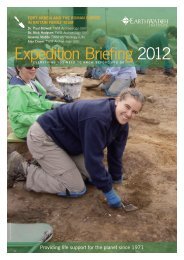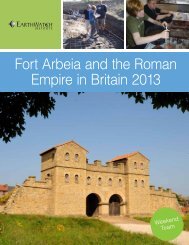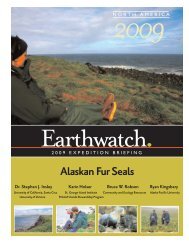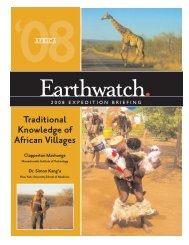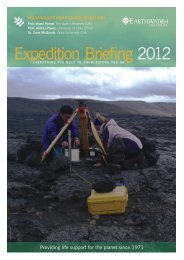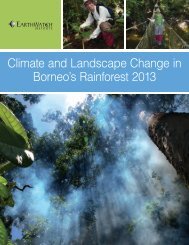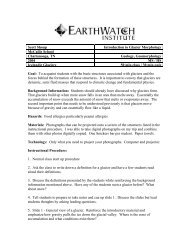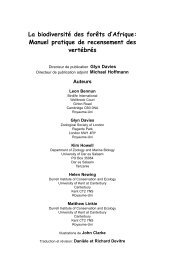African Forest Biodiversity - Earthwatch Institute
African Forest Biodiversity - Earthwatch Institute
African Forest Biodiversity - Earthwatch Institute
Create successful ePaper yourself
Turn your PDF publications into a flip-book with our unique Google optimized e-Paper software.
Traditional transects can be difficult to place in forests. Timed speciescounts,<br />
which do not depend on a straight-line route, are one solution, but they<br />
have substantial disadvantages too. Some of these can be overcome by simple<br />
modification. For comparative survey and monitoring, however, the biggest<br />
drawback concerns the calculated abundance indices, which are not arithmetically<br />
tractable – therefore, one cannot simply calculate overall indices for, say,<br />
feeding guilds. Timed transects have been tested in several Kenyan forests,<br />
and combine the flexibility of timed species-counts with the additive indices of a<br />
standard, fixed-width transect.<br />
All of these visual/aural methods work best for canopy and mid-level<br />
birds. For undergrowth species, standardised mist netting is appropriate for<br />
survey and monitoring work, although it is labour-intensive and time-consuming.<br />
By confining point counts and timed transects to birds above a certain level<br />
(3m has been used in Kenyan forests), it is possible to differentiate undergrowth<br />
and higher-level birds. As the results of these studies show, bird community<br />
changes can be different at these two levels. This is to be expected,<br />
given that structural change after logging can affect high- and low-level<br />
vegetation in very dissimilar ways.<br />
153


